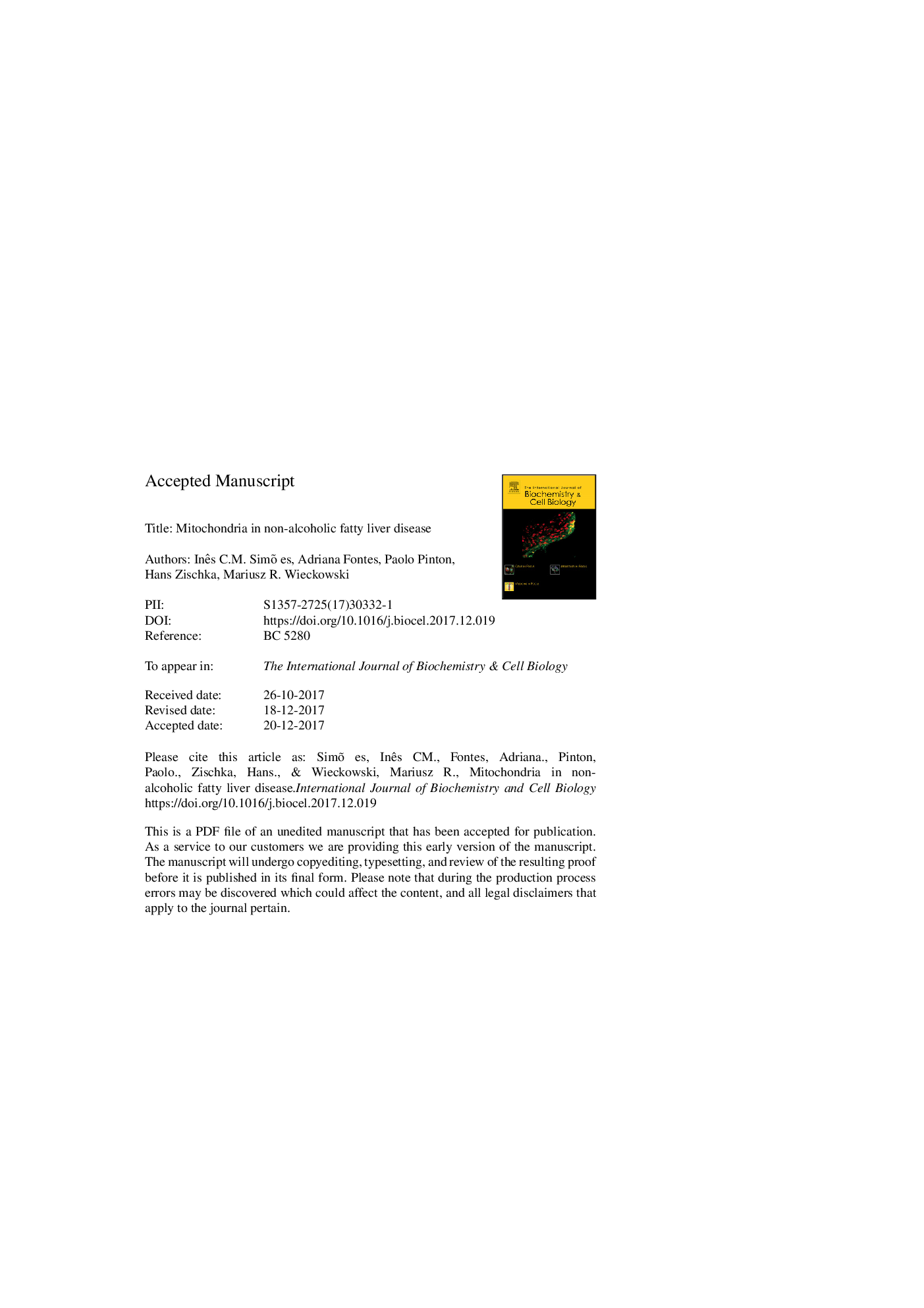| Article ID | Journal | Published Year | Pages | File Type |
|---|---|---|---|---|
| 8322063 | The International Journal of Biochemistry & Cell Biology | 2018 | 14 Pages |
Abstract
NAFLD is a common disease in Western society and ranges from steatosis to steatohepatitis and to end-stage liver disease. The molecular mechanisms that cause the progression of steatosis to severe liver damage are not fully understood. One suggested mechanism involves the oxidation of biomolecules by mitochondrial ROS which initiates a vicious cycle of exacerbated mitochondrial dysfunction and increased hepatocellular oxidative damage. This may ultimately pave the way for hepatic inflammation and liver failure. This review updates our current understanding of mitochondria-derived oxidative stress in the progression of NAFLD.
Keywords
PGC-1αFFAGPXOXPHOSMIRiNOSAMPKHFD8-OHdGMPTALTHNEapoBCPT-1mitochondrial GSHPPAR-αNRF-2MDANAFLDNF-κBNADPHJnkGSH4-hydroxy-2-nonenal8-Hydroxy-2-deoxyguanosineAMP-activated protein kinaseMitochondrial DNADNAAdenosine TriphosphateATPASTalanine transaminaseApolipoprotein BNon-alcoholic steatohepatitisdeoxyribonucleic acidFree fatty acidsmitochondrial permeability transitionFatty acid oxidationinterleukinnon-alcoholic fatty liver diseaseaspartate transaminasemtDNAhigh-fat dietelectron transport chaininducible nitric oxide synthaseendoplasmic reticulumnuclear respiratory factor 2FAOnuclear factor kappa-BOxidative phosphorylationmalondialdehydeInsulin resistanceMicroRNANash Nitric oxidenicotinamide adenine dinucleotide phosphateETcMitochondrial membrane potentialGlutathioneglutathione peroxidase
Related Topics
Life Sciences
Biochemistry, Genetics and Molecular Biology
Biochemistry
Authors
Inês C.M. Simões, Adriana Fontes, Paolo Pinton, Hans Zischka, Mariusz R. Wieckowski,
